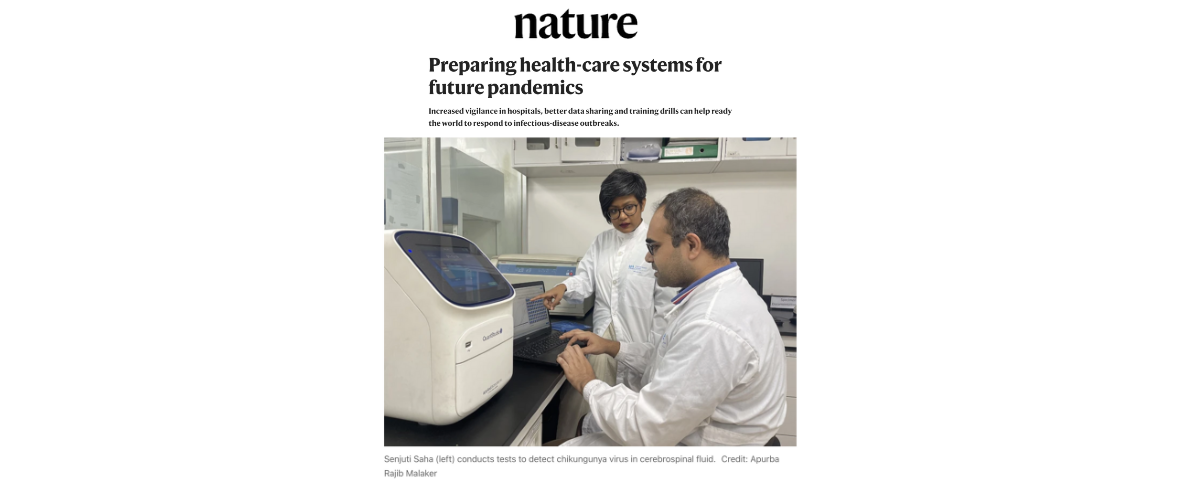
The article discusses the concern and role of physicians, infectious disease epidemiologists, and frontline healthcare workers in preparing for future pandemics. It touches on three key points in this regard - i) frontline vigilance, ii) sharing and comparing, iii) a state of readiness.
On sharing and comparing of data, the article engages in conversation with Dr. Senjuti Saha, Director and Scientist of CHRF. It elaborates on how Dr. Saha’s setup became an example for others to replicate and prepare themselves to tackle other infectious-disease outbreaks in their region.
The article highlights how the range of available diagnostics in hospitals in low- and middle-income countries is often particularly limited — physicians commonly encounter illnesses for which they cannot identify a cause. Dr. Saha's work on genomics in CHRF helps tackle this.
Dr. Saha's team used CHRF's state-of-the-art genomic sequencing facility in Bangladesh to analyse cases of meningitis in the local community that were caused by unknown pathogens. Sequencing samples of cerebrospinal fluid from children who had meningitis showed, to the scientists’ surprise, that in some cases the patient condition stemmed from an otherwise unnoticed outbreak of the chikungunya virus. This allowed the group to design a simple PCR test for the virus that the nearby hospital’s diagnostic lab could use in the future to detect outbreaks of the virus faster. This setup by Dr. Saha in CHRF has henceforth become an example for others to replicate and prepare themselves to tackle other infectious-disease outbreaks in their region.
Read more here.
